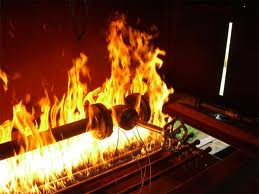Fire Safe Valves
Fire Safe Valve is a valve that can maintain its pressure containing ability during and after a certain period of fire exposing.This kind of valve we use because the possibility of hazardous or flammable fluid leakage from the valve during fire event. If we are using a non fire safe valve for a flammable fluid which has likelihood to be exposed in fire pool during accident, then we will have leakage from the valve stem seal that already melt. This leakage of flammable fluid will feed the fire and make the fire getting bigger than before. Thus, we need a fire-safe valve that didn’t leak when it is exposed to a fire. In typical application, a fire-safe valve shall be tested and certified in accordance with API 607 or ISO 10497.
How fire safe valves works
There are two kind of leak that we want to avoid when a valve is exposed to a fire (before and after fire), leakage from the seat and leakage from the stem. There are also two methods to achieve a fire safe design, by using a fire-proof component or by using a non fire proof component but supported by a special design that will prevent leakage after the component is melt.
The first method to achieve a fire safe design by using a fire-proof component usually is referring as an inherently fire safe valve. Usually this type of valve is a metal seated valve by using a graphite seat insert (in ball valve or butterfly valve) and graphite stem packing. By using graphite as a seat insert and stem packing, the graphite will remain stand even after fire exposure.
The second method to achieve a fire safe design by using a non fire proof component usually is referring as fire tested valve. This valve is using a thermoplastic seat material and a thermoplastic stem packing material such as PTFE. In the seat design, even though the seat is thermoplastic, it is designed so that when the thermoplastic is melting due to high temperature exposure the seal is still achievable by a body machined as a secondary seal. In the stem packing design, usually the thermoplastic seal is supported by a graphite seal as a secondary packing.
